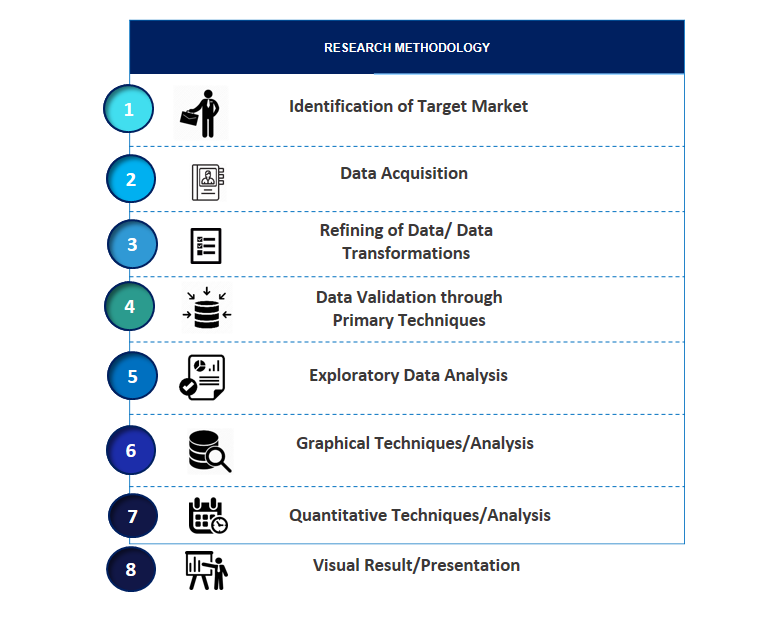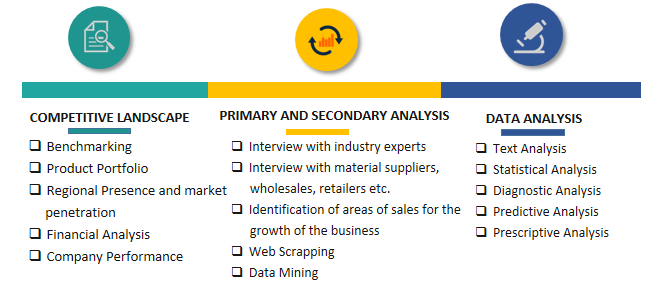Global Companion Animal Diagnostics Market Introduction and Overview
According to SPER Market Research, the Global Companion Animal Diagnostics Market is estimated to reach USD 8.4 billion by 2034 with a CAGR of 9.05%.
The report includes an in-depth analysis of the Global Companion Animal Diagnostics Market, including market size and trends, product mix, Applications, and supplier analysis.
The market for companion animal diagnostics is expected to reach US$ 5.45 billion in 2029, growing at a strong compound annual growth rate (CAGR) of 9.05% from its 2024 valuation of US$ 3 billion. The market is growing due to a number of factors, such as increased pet ownership, technology developments in companion animal diagnostics, and rising veterinary expenses.
Our in-depth analysis of the Global Companion Animal Diagnostics Market includes the following segments:
By Animal Insights
In 2023, the consumables segment was the largest part of the companion animal diagnostics market due to a rise in demand for diagnostic tools. This growth is driven by new point-of-care solutions that provide quick results for veterinary clinics and pet owners. Key consumables include lateral flow assays, test kits, reagents, and imaging supplies, with lateral flow assays being popular for their simplicity and speed in detecting diseases in pets. Increased emphasis on preventive care and monitoring chronic conditions also boosts demand. The market is set to grow as these tools help with early disease detection, benefiting both pets and veterinarians.
By Animal Insights
In 2023, dogs had the largest share of the companion animal diagnostics market. New technologies like clinical biochemistry, immunodiagnostics, and molecular diagnostics have been created to diagnose health issues in dogs. By focusing on common diseases such as heart disease and diabetes, these methods help with early detection and better treatment. As more people treat dogs like family, there is a growing demand for veterinary diagnostics, further expanding the market for dog health solutions.
By Regional Insights
In the Asia Pacific region, the market for companion animal diagnostics is expected to grow rapidly due to urbanization and increasing pet ownership. As more people move to cities, veterinary clinics and diagnostic services are more accessible, making it easier for pet owners to seek healthcare for their pets. Owners are becoming more aware of the importance of regular check-ups and preventive care. This trend has led to increased spending on higher-quality veterinary services, especially in developing markets like China and India.
Market Competitive Landscape
There are a number of significant competitors in the somewhat competitive companion animal diagnostics market. Currently, a few numbers of the big competitors dominate the market in terms of market share. Heska Corporation, Agrolabo SpA, Zoetis Inc, IDEXX Laboratories Inc, Innovative Diagnostics Neogen Corporation, Thermo Fisher Scientific Inc, Randox Laboratories Ltd, and Virbac are just a few of the well-known local and international businesses that are analyzed in the competitive landscape.
Recent Developments:
- The Catalyst Pancreatic Lipase Test (Chemistry Analyzer), a single-slide solution for canine and feline patients that aids in the diagnosis of pancreatitis, was introduced by IDEXX in June 2024.
- The Vetscan OptiCell (Analyzer), a cartridge-based AI-powered hematology analyzer that offers sophisticated Complete Blood Count (CBC) analysis, was introduced by Zoetis Services LLC in May 2024.
- In March 2023, FUJIFILM Corporation and Boule expanded their agreement in Europe for veterinary solutions. FUJIFILM began promoting Boule products in three European countries in mid-2022. Following success and positive customer feedback, FUJIFILM will now sell Boule’s veterinary hematology products in five more European countries.
Scope of the report:
| Report Metric | Details |
| Market size available for years | 2020-2033 |
| Base year considered | 2023 |
| Forecast period | 2024-2033 |
| Segments covered | By Product, By Technology, By Application, By Animal, By End User |
| Regions covered | North America, Latin America, Asia-Pacific, Europe, and Middle East & Africa |
| Companies Covered | IDEXX, Zoetis Services LLC, Mars, Incorporated, FUJIFILM Corporation, bioMérieux, Thermo Fisher Scientific Inc, Virbac, Neogen Corporation, INDICAL BIOSCIENCE GmbH, IDvet, Randox Laboratories Ltd, Shenzhen Mindray Animal Medical Technology Co, LTD, Bionote USA Inc, Boule, EUROIMMUN Medizinische Labordiagnostika AG, Biopanda Reagents Ltd, Nova Biomedical. |
Key Topics Covered in the Report:
- Global Companion Animal Diagnostics Market Size (FY’2025-FY’2034)
- Overview of Global Companion Animal Diagnostics Market
- Segmentation of Global Companion Animal Diagnostics Market By Product (Consumables, Instruments)
- Segmentation of Global Companion Animal Diagnostics Market By Technology (Clinical Biochemistry, Immunodiagnostics, Hematology, Urinalysis, Molecular Diagnostics, Other Companion Animal Diagnostics Technologies)
- Segmentation of Global Companion Animal Diagnostics Market By Animal (Dogs, Cats, Horses and Other Companion Animals)
- Segmentation of Global Companion Animal Diagnostics Market By Application (Clinical Pathology, Bacteriology, Virology, Parasitology)
- Segmentation of Global Companion Animal Diagnostics Market By End User (Diagnostics Laboratories, Veterinary Hospitals and Clinics, Research Institutes and Universities, Home-Care Settings)
- Statistical Snap of Global Companion Animal Diagnostics Market
- Expansion Analysis of Global Companion Animal Diagnostics Market
- Problems and Obstacles in Global Companion Animal Diagnostics Market
- Competitive Landscape in the Global Companion Animal Diagnostics Market
- Details on Current Investment in Global Companion Animal Diagnostics Market
- Competitive Analysis of Global Companion Animal Diagnostics Market
- Prominent Players in the Global Companion Animal Diagnostics Market
- SWOT Analysis of Global Companion Animal Diagnostics Market
- Global Companion Animal Diagnostics Market Future Outlook and Projections (FY’2025-FY’2034)
- Recommendations from Analyst
1. Introduction
1.1. Scope of the report
1.2. Market segment analysis
2. Research Methodology
2.1. Research data source
2.1.1. Secondary Data
2.1.2. Primary Data
2.1.3. SPER’s internal database
2.1.4. Premium insight from KOL’s
2.2. Market size estimation
2.2.1. Top-down and Bottom-up approach
2.3. Data triangulation
3. Executive Summary
4. Market Dynamics
4.1. Driver, Restraint, Opportunity and Challenges analysis
4.1.1. Drivers
4.1.2. Restraints
4.1.3. Opportunities
4.1.4. Challenges
5. Market variable and outlook
5.1. SWOT Analysis
5.1.1. Strengths
5.1.2. Weaknesses
5.1.3. Opportunities
5.1.4. Threats
5.2. PESTEL Analysis
5.2.1. Political Landscape
5.2.2. Economic Landscape
5.2.3. Social Landscape
5.2.4. Technological Landscape
5.2.5. Environmental Landscape
5.2.6. Legal Landscape
5.3. PORTER’s Five Forces
5.3.1. Bargaining power of suppliers
5.3.2. Bargaining power of buyers
5.3.3. Threat of Substitute
5.3.4. Threat of new entrant
5.3.5. Competitive rivalry
5.4. Heat Map Analysis
6. Competitive Landscape
6.1. Global Companion Animal Diagnostics Market Manufacturing Base Distribution, Sales Area, Product Type
6.2. Mergers & Acquisitions, Partnerships, Product Launch, and Collaboration in Global Companion Animal Diagnostics Market
7. Global Companion Animal Diagnostics Market, By Product (USD Million) 2025-2034
7.1. Consumables
7.2. Instruments
8. Global Companion Animal Diagnostics Market, By Technology (USD Million) 2025-2034
8.1. Clinical Biochemistry
8.2. Immunodiagnostics
8.3. Hematology
8.4. Urinalysis
8.5. Molecular Diagnostics
9. Global Companion Animal Diagnostics Market, By Application (USD Million) 2025-2034
9.1. Clinical Pathology
9.2. Bacteriology
9.3. Virology
9.4. Parasitology
9.5. Others Applications
10. Global Companion Animal Diagnostics Market, By Animal (USD Million) 2025-2034
10.1. Dogs
10.2. Cats
10.3. Horses
10.4. Other Companion Animals
11. Global Companion Animal Diagnostics Market, By End User (USD Million) 2025-2034
11.1. Diagnostic Laboratories
11.2. Veterinary Hospitals and Clinics
11.3. Research Institutes & Universities
11.4. Home-care Settings
12. Global Companion Animal Diagnostics Market Forecast, 2025-2034 (USD Million)
12.1. Global Companion Animal Diagnostics Market Size and Market Share
13. Global Companion Animal Diagnostics Market, By Region, 2025-2034 (USD Million)
13.1. Asia-Pacific
13.1.1. Australia
13.1.2. China
13.1.3. India
13.1.4. Japan
13.1.5. South Korea
13.1.6. Rest of Asia-Pacific
13.2. Europe
13.2.1. France
13.2.2. Germany
13.2.3. Italy
13.2.4. Spain
13.2.5. United Kingdom
13.2.6. Rest of Europe
13.3. Middle East and Africa
13.3.1. Kingdom of Saudi Arabia
13.3.2. United Arab Emirates
13.3.3. Qatar
13.3.4. South Africa
13.3.5. Egypt
13.3.6. Morocco
13.3.7. Nigeria
13.3.8. Rest of Middle-East and Africa
13.4. North America
13.4.1. Canada
13.4.2. Mexico
13.4.3. United States
13.5. Latin America
13.5.1. Argentina
13.5.2. Brazil
13.5.3. Rest of Latin America
14. Company Profile
14.1. IDEXX
14.1.1. Company details
14.1.2. Financial outlook
14.1.3. Product summary
14.1.4. Recent developments
14.2. Zoetis Services LLC
14.2.1. Company details
14.2.2. Financial outlook
14.2.3. Product summary
14.2.4. Recent developments
14.3. Mars, Incorporated
14.3.1. Company details
14.3.2. Financial outlook
14.3.3. Product summary
14.3.4. Recent developments
14.4. FUJIFILM Corporation
14.4.1. Company details
14.4.2. Financial outlook
14.4.3. Product summary
14.4.4. Recent developments
14.5. bioMérieux
14.5.1. Company details
14.5.2. Financial outlook
14.5.3. Product summary
14.5.4. Recent developments
14.6. Thermo Fisher Scientific Inc
14.6.1. Company details
14.6.2. Financial outlook
14.6.3. Product summary
14.6.4. Recent developments
14.7. Virbac
14.7.1. Company details
14.7.2. Financial outlook
14.7.3. Product summary
14.7.4. Recent developments
14.8. Neogen Corporation
14.8.1. Company details
14.8.2. Financial outlook
14.8.3. Product summary
14.8.4. Recent developments
14.9. INDICAL BIOSCIENCE GmbH
14.9.1. Company details
14.9.2. Financial outlook
14.9.3. Product summary
14.9.4. Recent developments
14.10. IDvet
14.10.1. Company details
14.10.2. Financial outlook
14.10.3. Product summary
14.10.4. Recent developments
14.11. Randox Laboratories Ltd
14.11.1. Company details
14.11.2. Financial outlook
14.11.3. Product summary
14.11.4. Recent developments
14.12. Shenzhen Mindray Animal Medical Technology Co, LTD
14.12.1. Company details
14.12.2. Financial outlook
14.12.3. Product summary
14.12.4. Recent developments
14.13. Bionote USA Inc
14.13.1. Company details
14.13.2. Financial outlook
14.13.3. Product summary
14.13.4. Recent developments
14.14. Boule
14.14.1. Company details
14.14.2. Financial outlook
14.14.3. Product summary
14.14.4. Recent developments
14.15. EUROIMMUN Medizinische Labordiagnostika AG
14.15.1. Company details
14.15.2. Financial outlook
14.15.3. Product summary
14.15.4. Recent developments
14.16. Biopanda Reagents Ltd
14.16.1. Company details
14.16.2. Financial outlook
14.16.3. Product summary
14.16.4. Recent developments
14.17. Nova Biomedical
14.17.1. Company details
14.17.2. Financial outlook
14.17.3. Product summary
14.17.4. Recent developments
14.18. Others
15. Conclusion
16. List of Abbreviations
17. Reference Links
SPER Market Research’s methodology uses great emphasis on primary research to ensure that the market intelligence insights are up to date, reliable and accurate. Primary interviews are done with players involved in each phase of a supply chain to analyze the market forecasting. The secondary research method is used to help you fully understand how the future markets and the spending patterns look likes.
The report is based on in-depth qualitative and quantitative analysis of the Product Market. The quantitative analysis involves the application of various projection and sampling techniques. The qualitative analysis involves primary interviews, surveys, and vendor briefings. The data gathered as a result of these processes are validated through experts opinion. Our research methodology entails an ideal mixture of primary and secondary initiatives.


